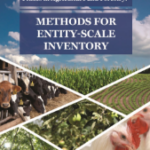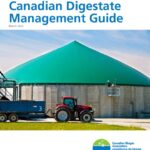Welcome to Newtrient’s Resources Library
Use this library to find webinars, peer reviewed articles, white papers, links to relevant websites and more.
The Dairy Soil & Water Regeneration (DSWR) Progress Update provides project insights and preliminary findings on the six-year project assessing how farming practices affect soil health, greenhouse gases and water quality in dairy feed production.
A webinar series on dairy sustainability and technology evaluations: This second webinar in the series is focused on the results of manure separation technology, most specifically a decanter centrifuge.
Due to its existing environmental and economic benefits, dairy farmers often turn to anaerobic digestion to mitigate greenhouse gas (GHG) emissions from manure. A study by Greene et al. quantifies the GHG reduction potential of the implementation of anaerobic digesters on large-scale U.S. dairy farms.
Based on a survey of U.S. dairy producers, the State of the Dairy Industry 2024 Report presents current data, challenges, and opportunities in milk and crop production, environmental stewardship, technology adoption, and related areas within the dairy industry.
Research by Jiang et al. studied the air quality impact of anaerobic digesters in 2050 across the San Joaquin Valley. The study suggests anaerobic digesters can be extensively integrated in central California to reduce greenhouse gas emissions from dairy farms with minimal effect on regional air quality and public health.
The USDA has recently updated the Quantifying Greenhouse Gas Fluxes in Agriculture and Forestry: Methods for Entity-Scale Inventory since its original publishing in 2014. Using technical guidelines, the report provides users with methods to quantify greenhouse gas fluxes in both agriculture and forestry systems.
The Innovation Center for U.S. Dairy has released its ninth U.S. Dairy Sustainability Report, addressing the progress, strategy, and partnerships achieved across three pillars; Advance Well-being, Regenerate the Environment, and Care for Animals and Communities.
A tool to help farms evaluate the costs, risks, and benefits associated with participating in agricultural carbon market programs, facilitating informed decision-making and enhancing their ability to implement climate-smart practices effectively.
Published by the Canadian Biogas Association, the Canadian Digestate Management Guide provides practical and useful information for maximizing the benefits of the safe use of digestate products.
Chris Kopman provides an overview of Newtrient's mission, services, and resources for finding solutions addressing the environment and economic challenges faced by dairy producers during a recent sustainability webinar held by Washington Dairy.










